If the F-104 had been your first fighter, you would probably want something hot to fly when you no longer flew fighters for a living. Wolfgang Meyn chose the F-1 Rocket with the Evo wing, but he has expressed his joie de vivre by adding a supercharger and IFR avionics so he’d have a fast, high-altitude cross-country airplane.
Meyn alternates between ebullient and enthusiastic when talking about his F-1 and about flying in general, including his five F-104 years in the Luftwaffe and 13 years of flying the Tornado ground attack fighter-bomber. He was an instructor pilot in each, and now he’s a Tornado simulator and ground school instructor for the Luftwaffe, in New Mexico, teaching in a mixture of German and barely accented English.
His F-1 started as a quickbuild kit. “They only have the name quickbuild,” he said. “There’s still plenty of work to do.” Complimenting Mark Frederick’s TeamRocket, Meyn says he loved the photographs in the construction manual and the “unbelievable customer support.” Building the airframe was “time-consuming but not challenging,” he explained. The “most challenging parts were when I started to redesign a few things.”
Supercharged!
The big difference on Meyn’s airplane is the Aero Supercharger Solutions supercharger, located just inside the left-hand air-cooling inlet, teamed up with a modified Airflow Performance fuel-injection system. Air comes in through the fuel control unit, which contains the throttle plate and a venturi that measures velocity, from which mass flow (how many pounds of air are going through the unit) is used to mechanically adjust the amount of fuel leaving the unit through the metered fuel line. The air then goes through the supercharger and into the intake manifolds. Meanwhile, the fuel goes through a “spider” on top of the engine that sends it to each of the cylinders.
But there’s more. With the supercharged engine generating 42 inches of manifold pressure, the air-bleed injector nozzles need to be surrounded with supercharger air so that the fuel goes into the cylinders and doesn’t escape through the injector vents. This is done with upper deck rails that provide the supercharged air to little widgets—“they look like elephant trunks,” says Meyn—that surround the injectors; basically the same arrangement used with factory turbocharged applications.
Believe it or not, that’s the short version of how the system works, but there’s more to it, such as valves to handle deck rail vacuum when the engine is at idle. One of the tricks of running the engine lean of peak (for greater economy) is to have the fuel flow to the cylinders balanced so that all of the cylinders run rich or lean in close accord. Meyn reports that his injectors are balanced so that each EGT peaks within 0.2 gph.
The last point is that the fuel pump has to be able to provide enough pressure—after the drop from going through the fuel control unit, the spider and the fuel lines—to provide enough fuel to feed 360 thirsty horses on the Lycoming AEIO-540, the parallel-valve version. On Meyn’s engine, the standard engine-driven pump did not provide enough pressure, so an auxiliary fuel pump is required for high power settings.
Ignition is dual Light Speed Plasma IIIs. These now have the stock spark advance curve, shifted for the higher manifold pressures. After Meyn got the ignition modified this way, the engine ran a few degrees cooler, and he loves that the engine starts right up, every time, even on hot starts. For safety of flight with two electronic ignition systems and no magnetos there are two complete electrical systems—batteries, alternators, buses, everything.
To make room for the supercharger in the front left of the engine, Meyn’s airplane has a 5.5-inch extension between the MT prop and the engine. That, and other changes meant that the cowling had to be modified. Meyn says that the angle-valve AEIO-540 would have weighed at least 100 pounds more and probably would have been too wide to fit in the cowling.
The greatest challenge came from the wiring, which was done mostly by Georg Himmeroeder. The panel is full of goodies, so there’s not lots of room behind it for all the “hook ’em ups.” And Meyn didn’t like the airspeed and altitude tapes on the Grand Rapids EFIS initially, even though they were much like the HUDs he was accustomed to. After a period of acclimatization, though, he now loves them.
When all was done, it was time to paint the Rocket, and the design is a 1942 paint scheme for an Me-109, “the last paint scheme before the Luftwaffe ran out of money,” he says. And, yes, the blue on the vertical fin and rudder is authentic.
Getting Out of Dodge
We flew out of Fond du Lac on the Sunday before AirVenture (Oshkosh). In the back seat, there was enough room, but no heel wells for ankle comfort. The five-point seat belt was the kind with the master socket on the crotch belt, and the other four straps plugged in—“just like on a Martin-Baker ejection seat,” Meyn explained.
After an immediate engine start, Meyn rolled out onto the runway, stopped, checked a few last items, then pushed the power forward to 36 inches and released the brakes. The Rocket lurched forward, and then Meyn pushed the throttle the rest of the way forward to 42 inches. The Rocket, well, rocketed forward. Even though the engine has only a 7.3:1 compression ratio, it generates 360 horsepower, about 100 hp more than stock.
Liftoff was at 75 knots, and by the end of the runway we were at only 125 knots. No problem. Put a few G on the airframe for a quick pull-up to a steep climb, then drop one wing in a climbing turn. A typical climb uses 37 inches of manifold pressure and 2600 rpm at 110 knots, yielding 4000 fpm. This Rocket was not, repeat not, underpowered. The downside is that that power setting needs the boost pump to help slake its thirst for 33 gph of avgas, fortunately not for long. In most airplanes, by the time you make it to altitude, you feel like you’ve accomplished something. In the F-1, achieving a modest 10,000 feet of altitude is almost a “So what?”
Cruise Speeds
The mission of this aircraft is high-altitude, cross-country flying. Meyn loves cruising at 220 knots true at 17,500 feet, sipping 12.5 gph, running lean of peak. Using lean-of-peak mixture, a smart Rocket pilot can go faster burning less fuel than an RV flown by an average pilot. “I love to play with it because you can learn so much about engines,” Meyn said.
The flight included a running commentary from Meyn on power settings, fuel consumption and engine temperatures (surprisingly cool cylinder head temperatures), and he cautioned, “Engine management is not for the uninvolved.” But with only 54 gallons of fuel onboard, and fuel burn rates that can empty the tanks in 3 hours, the Rocket does not have the generous fuel reserves of some other IFR aircraft. That’s no problem for Meyn. “I can’t sit for more than two and a half hours, and I always want a full hour of reserve,” he said. “It’s simple. My limit is 1 hour of fuel reserve. Period. I don’t want to get into any FAA actions.”
How fast is it? We leveled at 10,500 feet, and with 30 inches of manifold pressure and 2600 rpm, we saw a true airspeed of 210 knots. This power setting, running lean of peak, took 16 gph, and the highest cylinder-head temperature was 357° F. But speed depends on how much you want to splurge on gas, of course, and winds. Meyn says the biggest surprise of the airplane is “how quickly you can cover distance.” The highest true airspeed he’s seen in level flight was with full power at 6000 feet giving 242 knots.
Meyn had promised to show me 300 mph in the airplane, though admitting it would take a dive to get the speed that high. Instead of a dive, though, a tailwind gave us a groundspeed of 265 knots (305 mph) with 30 inches of manifold pressure and chugging 20 gph. High-altitude cruise requires long climbs, so Meyn added rudder trim. Oxygen needs were met by a Mountain High oxygen system with a remote regulator. Need more goodies? How about electrically heated seats? Or a custom roll bar welded from food-quality stainless steel? “You can lick it,” Meyn says. The cabin heat valve is operated by an RC (radio controlled) servo.
Meyn has gone to considerable effort to make the back seat as comfortable as possible, but though his wife enjoyed flying with him in other planes, she gets airsick in the back seat and does not fly with him in the Rocket. They can’t figure out why she’s Rocket-intolerant.
By the Book? Ha!
The F-1 Rocket is, by most accounts, a thrilling airplane to fly, but it is not without limitations. Then again, each homebuilt aircraft has its idiosyncrasies, and there are more variations among homebuilts manufactured from the same kit than among factory-built aircraft of the same make and model. Meyn explained that with the Evo wing, he thinks of the Rocket as a single-seater in which you can carry a second person if you choose. With me in the back, the c.g. was way aft, and the lightweight MT prop doesn’t do anything useful to move it forward.
When we passed 3000 feet not long after takeoff, I was offered the controls, and it took several tries to get the wings exactly level. First one wing was 3° low, and then the other. Couldn’t be me, could it? And it wasn’t the c.g. The mystery was solved when we got back onto the ground. For whatever reason, the ailerons were stiff, as if a bolt somewhere had been tightened too much. Meyn suspects that it’s the electric aileron trim, a design borrowed from an RV-8. There was none of this easy push on the side of the stick and watch it come back to center all by itself that I saw on another F-1 at AirVenture, that one with the Hershey-bar wing. When you have powerful, sensuous ailerons and load them up with trim and servos and such, they get petulant.
The c.g. was far enough aft that “normal” pitch stability was not observed. In a steep turn, I asked for a G reading from the front seat. “Is this about 2.5 G?” I asked. “No, it’s 3.5.” How much stick force for 3.5 G? Three pounds, about a pound per G—much, much lighter than the 6 to 10 pounds per G that the handling qualities books call for. With that friction in the ailerons and the super light elevators, the control harmony was backwards of what the books recommend. The moral of the story? If you have a tandem airplane balanced for solo flight, and you get your c.g. too far aft, be prepared.
How about roll rate? From a 60° bank, I shoved in full aileron—smoothly, of course—and we were instantly at 60° the other way. There’s some numerical value to go with it, and I don’t know what it is, but it’s plenty quick. Meyn commented that in the F-104, the roll rate was 720° per second, but that much roll rate is disorienting, and all you do is bang your head against the canopy.
Solo, with the c.g. where it belongs, it’s a different story. Meyn says the F-1 is the “perfect mix of stability and maneuverability.” He had no trouble at all with the aft-c.g. handling qualities on our flight, because he’s paid his dues and kept his skills current.
Playtime is Over
Meyn flew final approach at a seemingly glacial 86 knots, with touchdown at about 65 knots, near as I could tell from the back seat. Wish it had been me up front. How does the Rocket compare to fighters? Meyn says that fighters were so fast and had so much equipment that there were few factors that came into play in airmanship. In general aviation, by comparison, factors such as crosswind do require airmanship, and compensating for those factors brings a genuine joy to Meyn’s flying. Still, he says the Rocket is “not a beginner’s airplane.” He added that on a downline, like on the back of a loop, the airframe picks up speed quickly.
No, it’s a big boy’s toy, and with all the goodies onboard, Meyn’s comes with a big boy’s price, just over $200K in parts and pieces, electronics and goodies. But if you used to bring your F-104 over the fence at 200 knots, and you still instruct, this is what you’d fly now.




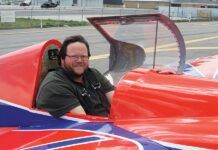

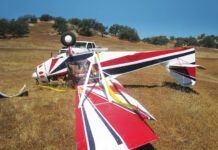
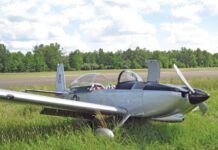
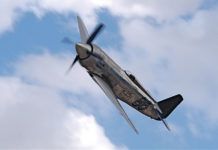
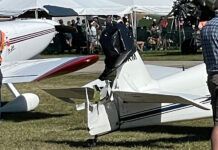
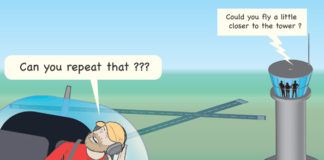

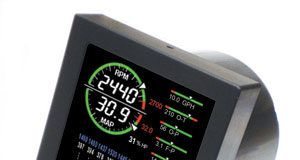
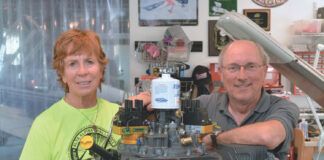
According to F1 Rocket’s website:
https://f1aircraft.com/flying-your-f1-rocket-or-f4-raider/
The Vne is 240 knots. And I assume that’s TAS?
It seems that the airplane in this article can surpass this speed pretty easily at high altitude. Would that be a risk?